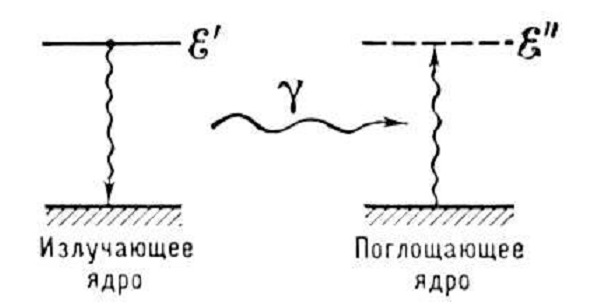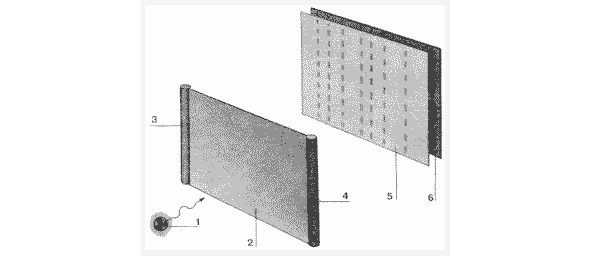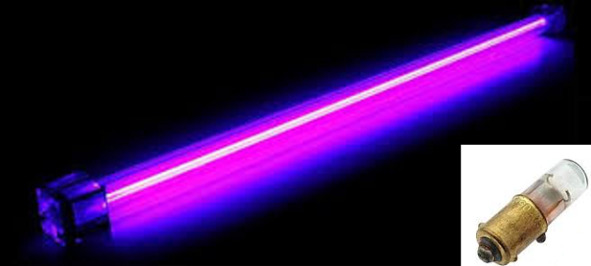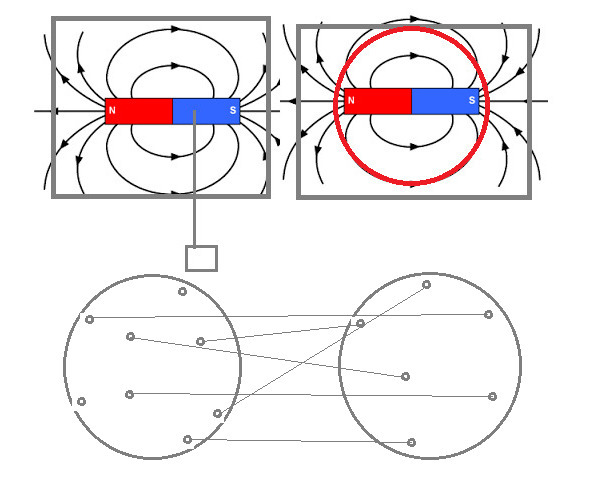
Living science. Naturalist Comics

Living science
Naturalist Comics
Rem Word
© Rem Word, 2021
ISBN 978-5-4496-6074-9
Created with Ridero smart publishing system
Light is faster than light
…From the science known to us, taught in schools and universities, a not known to us, now already similar to religion or magic, its peak spun off. It happened in the first half of the twentieth century. … First of all, some scientists introduce a crafty proposition that light particles do not have their own rest mass. These corpuscles themselves lose the status of actually material formations and are henceforth called “pure energy”. And, this is all despite the fact that energy is an abstract meaning, just the body’s ability to do a certain job. This state of affairs seeks to represent A. Einstein’s Special and General Theories of Relativity, formulated at the beginning of the twentieth century. It should be noted that there is a fairly good reason for the creation of the theories of SRT and GRT. This is a very curious behavior of light. First, its speed seems to be always the same. It is equal to the constant C – 300 thousand kilometers per second. Even when the source moves towards the observer. The principle of arithmetic addition of velocities does not apply here. Otherwise, the starry sky, for example, would appear to us as a set of glowing lines, not dots. The stars move pretty quickly and revolve around their axis. If their own speed were transmitted to particles of light, accelerated or slowed down photons, arriving at an observer on Earth sooner or later, would blur the image of the star into a wide line. Is this a reason for the SRT statement: “The speed of light is constant, does not depend on the movement of the source,” and all mental constructions emanating from this? Probably, photons with a speed different from C exist. A lot of them. This is the most common occurrence. However, the method of registering them should be different. The Mössbauer effect is known. Two crystals cooled to almost absolute zero, with practically stopped atoms, are not able to exchange gamma quanta (“hard light”), unless they begin to move relative to each other at a certain speed (several centimeters per second). The quanta fly through the crystal without finding an atom with a suitable absorption spectrum. We look at the drawing. As soon as the absorber of quanta (in this case, the source, anyway) begins to move, hard photons pass through it and are registered by the detector.

The starry sky is made up of dots, not luminous lines.

The gamma counter stops receiving radiation at a sufficiently high speed of the radioactive crystal

Schematic representation of the process. The condition for the reception of a gamma quantum by the nucleus is the equality of the levels of radiation – absorption of the elementary receiver and transmitter.

For a successful quantum transfer, the absorption and emission lines must intersect. This is possible only when two objects – the transmitter and the receiver – have a mutual velocity lower than the thermal velocities of their constituent microparticles.

We look at the stars more attentively …
In other words, the emission lines must either completely coincide, or somehow intersect. If objects have a lot of elementary particles moving with their own thermal velocities in all directions, the possibility that they will “see” each other, even moving at a considerable speed, remains. And yet, the speed of mutual movement, until the complete disappearance of optical contact, is limited.
We return to the stars. Yes, we do not see these celestial bodies as luminous segments, or more precisely, optical similarities of comets, due to the fact that the speed of light is limited only by a limited intersection of emission-absorption lines in our eyes and in the matter of stars. Otherwise, for example, Barnard’s “flying” star, which moves across the sky the diameter of the moon in 170 years, would definitely look like a tailed star. But – we must look more closely. Perhaps artificially created ideas about the finiteness of the speed of light prevent astrophysicists and astronomers from noticing a certain blurring of stars (and especially double stars) in the course of their movement.
…One of the author’s long-standing experiments is the transillumination of a rotating semitransparent disk. The photographs show that closer to its edge, where the linear velocity is higher, the screen becomes more transparent (whereas with a stationary disc, the illumination is uniform). The higher the mutual speed of the light source and the obstacle, the lower the probability of absorption by the screen of “non-standard” quanta. Thus, the Mössbauer effect manifests itself not only in the sterile conditions of first-class laboratories, exclusively with frozen crystals and gamma-quanta, but also on the table of the amateur experimenter and everywhere in our lives. 1. Semi-transparent textolite disc, capable of rotating with a linear speed of the rim of 10 ms. 2. Projection of a spot of light transmitted through the disc. 3. A stream of light passing through the disk (for clarity, it is shown rotated by 90º). 4. A lamp that creates a stream of light 5. A tube with a lamp 6. A stationary platform with a tube 7. A stream of light passing through a certain oval area of the disk. 8. Photographic material – photographic paper, or photographic film (in this case, a pinhole camera is used to obtain a clear projection of the spot). 9. Directly, the translucent area of the disc. 10. An electric motor that rotates the disc. 11. The area of the spot that becomes lighter as the disc rotates. 12. The area of the spot (closer to the center, where the screen speed is slower), in comparison with the one farther from the axis, is darkened.

Experiment with Translucent Rotating Disc Translucent

Experiment with the transmission of an unevenly heated translucent screen
…The movement of the screen can be replaced by heating it. Indeed, in this case, the atoms and molecules of the obstacle begin to move faster. This experiment is described in detail in the publication “TM” No. 5, 2000. – “Temperature and radiation”. 1. Light source. 2. Screen. 3 and 4. Heating and cooling devices that create a temperature gradient along the screen 2. 5. Semitransparent screen that regulates the intensity of the light flux (radiation). 6. Light sensitive material. A directed stream of light passes through the glass with a gradient from 200 C to room temperature. The photographic paper located behind the screen captures the appearance of dark stripes longitudinal to the gradient. The heated area becomes lighter (more transparent). Thus, once again confirms the idea that photons with a non-standard speed are trapped by matter with a lower probability.
…The emission and absorption of radio waves are collective. Diverse groups of microparticles are involved in this process. In metals, these are free electrons with high intrinsic velocities of motion. Therefore, radio waves, “superluminal” and “before light”, are much easier to manifest themselves in measurement. Experiments on the radar of celestial bodies, carried out, in particular, by American astrophysicists, convincingly show that the speed of an electromagnetic wave is added to the speed of the planet itself. As you know, Soviet as well as Russian space stations fail in 80% of cases in the exploration of the Far Space. The percentage of errors in navigation by NASA and the European Agency is much less. Presumably, this ratio is connected with the greater conservatism of Russian scientists, who stubbornly refuse to take into account the necessary corrections for automatic stations. Supporters of SRT sometimes argue that relativistic calculations are necessary for the normal functioning of satellites of the global positioning system (Glonass, GPS). This is not entirely true. The adjustment of the position of the stations in the near-earth orbit is carried out automatically, according to the “reference points” on the Earth, without the Lorentz formulas, tensors and the notorious Einstein “time dilation”. We are surrounded by streams of particles of light, which, at first with difficulty, but can be detected. Light substance is obviously capable of creating structures that have zero or close to zero speed relative to rough matter – atoms and molecules. Such knowledge is great power. Perhaps they are trying to hide this state of affairs from us, who created, among other fakes, the Theory of Relativity, powerful supranational structures.

Far Space is simply not attainable for scientists with a conservative mindset.

Photons moving relative to us with near-zero speeds (or even staying at rest) are possibly capable of creating “clouds” of information structures that hide the secrets of the past and present.
We measure the speed of light. At home
Based on the materials of the author’s articles in the TM magazine, No. 10, 2001, p. 53. and No. 3, 2002, p. 24.
…In a household fluorescent lamp, the plasma temperature is on the order of tens of thousands of degrees. This corresponds to the motion of charged particles with a speed of about 100 km / s. Photons emitted by ions flying with a speed V must have a speed C + V directed along the axis of the lamp parallel to the photographic film, in accordance with the classical ballistic principle of the addition of velocities (and not with the SRT formulas). If this is the case, then the spot will move in the direction of movement of the ions emitting light. But if the second SRT postulate is true, then the light spot will not shift. The speed of the light source V will not add to the value C. The course of the experiment. I use a miniature neon lamp with a glass sheath that is transparent to UV radiation. At a pressure of about 0.1 mm Hg, a distance between the electrodes of 1.7 mm and an operating voltage of 220 V, inert gas ions are capable of acquiring a speed comparable to the speed of light C. Light from such a radiator passes through a narrow diaphragm (or camera obscura) and hits the screen, located parallel to the plane of the emitter electrodes at a distance of 0.8 m. The direction of the current in the lamp can be changed using a diode. After switching on, a lamp image appears on the projection screen. Both electrodes and the gas discharge column between them are clearly visible. When the direction of the current is changed, the image is displaced in the direction of the movement of positive ions by 11 mm with an absolute error of 0.2 mm. This means that the speed of light C is added with the speed of motion of its source V according to the classical, “ballistic” principle, and not in accordance with the SRT formulas. The only thing is that it is possible to calculate the speed of a radiation source from a ray of light, outside of spectral analysis, which is no longer in the spirit of the Theory of Relativity. The exact value of the speed of movement of ions in a neon lamp is difficult to determine. According to indirect estimates, it is on the order of 2000 km / s. This is in good agreement with the results of the performed experiment. It follows from this that either the second postulate of SRT is incorrect, or its physical meaning needs some special clarification.

Experiment scheme. Screen, collimator (obstacle with a hole), neon lamp, electric circuit with a diode – switch for the direction of movement of light-carrying particles

Light sources used in the experiment. Ultraviolet or the most common 18W lamp. Option – a miniature halogen bulb.

Scheme of the second experiment with a light accelerator lamp. Screen, prism, collecting lens, collimator, neon lamp, electrical circuit with switch diode

Diagram of the experiment of Italian physicists. A neutrino generated by a hot nuclear reactor travels faster than the speed of light.

Scheme of the experience of Siberian scientists. Accelerator. A tube for the removal of light from accelerated particles. Glass plate, “analogue of the world ether”, high-speed detector.

Bursts of radiation on the screen of a high-speed oscilloscope

A hypothetical plasma antenna is a method of accelerated space communication with objects in the Far Space. Perhaps this method of communication will have other interesting properties.
As the saying goes, “Ein Versuch ist kein Versuch” (search-search), and therefore I put on a second experiment with a neon lamp, fundamentally changing its conditions. The main element is now a glass prism, which deflects light rays of different wavelengths in different ways. If the speed of light is greater than C, the spectrum shifts towards the violet side. If less than C, a “redshift” occurs, as when observing a receding radiation source. But, this is not the Hubble effect. I place the neon lamp so that the plane of the electrodes is perpendicular to the pinhole screen. When the lamp is turned on, a spot of light appears on the screen. After polarity reversal, the beam is shifted by 24 arc minutes. Rejection error 4 minutes. Using well-known formulas, we calculate that in this case the change in the speed of light is 520 km / s, with an error of 85 km / s.
…Scientists from the OPERA group in Gran Sasso, Italy, unlike the author of this article, have the opportunity to make truly direct measurements of the velocity of microparticles. Neutrino either does not have rest mass, like a quantum of light, or it does. Certainly, like a photon, it rushes constantly at the speed of C. The speed of the source itself does not matter. At least that’s what is commonly believed. Using synchronized detectors, Italian physicists discover the existence of “small neutrons” moving at a speed 7.5 km in excess of C. from. The possible error is three orders of magnitude lower than this deviation. The publication will take place in 2011, and it attracts a flurry of criticism. Experimenters have to make excuses awkwardly.
In Russia, a direct measurement based on the scheme proposed by the author was carried out by the masters of academic science. And, of course, without references to the articles of a modest amateur experimenter in “Tekhnika-Molodezh”. This is evidenced by the publication of Academician of the Russian Academy of Sciences E. Aleksandrov in the journal “Science and Life”, No. 8, 2011. A modest gas-discharge lamp is replaced here by a majestic synchrotron, a cardboard screen and a pinhole camera – photosensors with high-speed oscilloscopes. So: “… As a pulsed light source, a synchrotron radiation source (SR) – an electron storage ring’ Siberia-1 ‘was used. SR of electrons accelerated to relativistic speeds (close to the speed of light) has a wide spectrum from infrared and visible to X-ray range. Radiation propagates in a narrow cone tangentially to the trajectory of electrons along the abstraction channel and is removed through a sapphire window into the atmosphere. There, the light is collected by a lens onto the photocathode of a fast photodetector. A beam of light on its way in a vacuum could be covered by a glass plate introduced by means of a magnetic drive. At the same time, according to the logic of the ballistic hypothesis, the light, which had previously supposedly had a double speed of 2C, after the window had to acquire the usual speed C”. … Of course, experience shows the speed of light, within an error of 0.5%, equal to the constant C. Interestingly, the experiment of Russian academicians does not even raise the question of how to divert light from elementary particles moving in the opposite direction. The corpuscles rotate in the accelerator exclusively counterclockwise, at different speeds. There are no reports that the experiment was performed with light from particles accelerated by, say, half, three-quarters of the standard speed in the synchrotron. A simple comparison of the results on the screen of a high-speed oscilloscope would place all the dots above the I. This adjustment is probably simply not possible. The only element of the actual experience here is the glass plate. However, who and where said that such a modest screen is able to equalize the speed of photons to standard C?
Here is this very screen of a two-beam high-speed oscilloscope. Top – U – control sinusoid of particle revolutions inside the synchrotron (voltage, which is the same), SI – curve from Cherenkov radiation sensors. The pulses are triangular in shape. This is data from a set, a packet of particles. Standard values are displayed by burst poppies. Below is a screen after a glass plate stands in the path of radiation. It seems that scientists are deliberately avoiding the issue of measuring the speed of light in a straightforward way. Perhaps glass is an analogue of condensed ether, according to some hypotheses, enveloping the Earth and so equalizing the speed of light to a certain constant. This is all good and interesting, but SRT has nothing to do with confirming the well-known postulate. If we talk about the plate as a substitute for ether, then, according to the enthusiasts of the “Ritz’s ballistic theory,” the scientists of the Siberian scientific town should use ever denser screens.
If we suddenly learn that the speed of light is added to the speed of the source, simply saying: “What will we have from this?”. The first is high-speed space communication systems. The light (radio signal) takes 12 minutes to get to Mars. The same amount back. Almost half an hour is too much to effectively control a rover or aircraft from Earth. Plasma antennas emitting radio waves with particles accelerated in the desired direction will cut the communication time by almost half. In addition, research, no longer limited by the principle of SRT, will certainly reveal new, amazing and demanded qualities of light.
…One of the features of Living Science, as the reader probably already perfectly understood, is that we consider the interaction of macroscopic bodies visible to the eye as a result of individual interactions of the microparticles that fold it. Besides the fact that the secret of the true basis of the postulate of the Theory of Relativity about the constancy of the speed of light has been solved, what else can our Science offer?

According to the conclusions of Living Science, the Sun and other celestial bodies exchange thermal motion through gravity
…A certain transfer of thermal energy is possible not only by electromagnetic waves, but also, presumably, by means of a gravitational field. In the first case, according to the laws of classical quantum mechanics, the interaction is transmitted by quanta. What is “quantum of the electromagnetic field” is spelled out clearly in textbooks – it is a photon, an oscillating thin thread, which for visible light has a length of 3 meters. Scientists write very muffled about quanta of static magnetic and electric fields. Sometimes in the reasoning and interaction schemes sticky “gluons” emerge. However, how exactly they help the microparticles communicate at macroscopic distances is not clear. The most problematic is the quantization of the gravitational field. It is rather difficult to imagine the forces of attraction going into infinity as a set of glomeruli-gravitons. It’s a shame to say that until now, in a full-scale (laboratory) experiment, the speed of propagation of gravitational waves has not even been measured. The simplest option is vacuum, the displacement of a massive ball is to measure the response speed of the second object. By default, in calculations of the position of celestial bodies, the speed of gravity is considered infinite. In another version, it is a constant C – 300,000 km. from. Nevertheless, gravitational forces, most likely, represent a web of changeable connections between elementary receivers and transmitters of the field – microparticles. And in this case, heat transfer by means of gravitational interaction is quite possible.

Experience with magnets. The metallic magnetized powder in the first thermostat communicates by means of one magnetic field with a magnet heated by an electric coil. The thermal sensor does not detect the corresponding heating in the first chamber
Output…
…Nowadays it is generally accepted that the radioactive elements contained in the volume of the planet are responsible for heating the earth’s interior for no small 3.5 billion years. Dear reader, no matter how much you leaf through textbooks and monographs, you will not find a detailed report of what exactly these elements are, what their content and half-life should be in order to maintain the temperature for so long, and why, finally, the peddling chain reaction did not blow our Earth to pieces. Our option. The planets are held together by the powerful gravity of the Sun. It is through this same channel, through the so-called “remote diffusion” of interacting microparticles, that heat is transferred from the star’s reactor into the bowels of the planets. The Earth, in turn, exchanges such latent heat with its companion, the Moon. Recall that Selena is not so cold. The temperature of its mantle, which should cool down long ago, is 200 C, and iron is boiled in the core. Perhaps you will agree with the version that, in addition to all of the above, a certain share in the heat exchange between celestial bodies, and simply bodies, is occupied by the so-called “hidden light”. So it turns out that only objects (arrays of matter) with the same spectrum, temperature, and, to some extent, composition, as the sender, are capable of catching the hidden component of the beam. Accordingly, such receivers-receivers in our case are certain layers of the Sun (a recognized source of energy) and the core of the Earth.
…In this case, the heated permanent magnet would have to transfer heat to other magnets by means of its “trembling” magnetic field, even through obstacles. The author set up such experiments. They gave an ambiguous result. Within 0.1 C, when one of the magnets was heated at 120 C, at a distance of 4 cm, no heat transfer occurred. The result was also negative for a suspension of magnetized metal powder. However, this does not mean at all that such a phenomenon does not exist in nature. Avoiding the concept of “central forces” and replacing them with the term “sum of arrays of single interactions” would definitely mean a breakthrough in science.
The world in a new light
Let us analyze once again one of the fundamental experiments of modern physics. Is there ether, a kind of ocean in which light waves roll?

